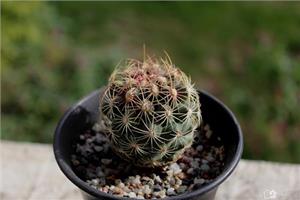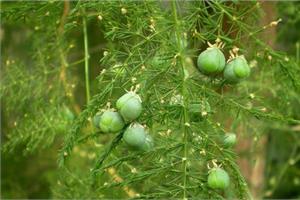What is Herbs Herbs Classification and characteristics of herbs
Herb is one of the many plants, I believe you may not understand, and then let's learn about it! Look at the characteristics of herbs.
What is a herb?
Most of the branches of herbs die after the growing season, but the roots of the underground parts can grow again in two years, and the roots of perennial herbs are generally stout. Some even grow organs such as tubers, tubers, bulbs, bulbs, and so on. In winter, the parts of the ground still sleep quietly, and when the climate gets warmer the next year, they sprout and grow again. As it grows year after year, the underground roots or stems may gradually become hypertrophic or branched.
Classification of herbaceous plants
Annual herb refers to the herb whose life span is only 1 year from seed germination, growth, fruiting to withering and death, that is, it can complete its life cycle in a growing season. Biennial herbs, only growing vegetative organs in the first growing season, flowering in the second growing season and withering after fruiting, such as winter wheat, sugar beet, broad beans and so on. Perennial herbs, with a long life, are generally herbaceous plants of more than two years, such as chrysanthemum, water lilies, magnolia and so on.
The xylem of herbaceous plants is less developed to underdeveloped, and the stems are succulent and softer. According to the length of the life cycle of herbaceous plants, it can be divided into annual, biennial or perennial. Most herbaceous plants die at the end of the growing season, including annual and biennial herbs, such as rice and radish.

The aboveground parts of perennial herbs die every year, while the roots, rhizomes and bulbs of underground parts can live for many years, such as geraniums. Among herbs, the habits of annual, biennial and perennial sometimes vary with geographical latitudes and cultivation habits, such as wheat and barley are biennial herbs when sowing in autumn and annual herbs when sowing in spring; for example, cotton and castor are annual herbs in Jiangsu and Zhejiang, while perennial herbs can grow in the south of low latitudes.
Life is relatively long, generally more than two years of herbaceous plants, such as chrysanthemum, orchids, lotus, water lilies, gentleman orchids and so on. Perennial herbs generally have stout roots, and some have organs such as tubers, tubers, bulbs, and bulbs. In winter, parts of the ground still sleep quietly, and when the climate gets warmer the next year, they sprout and grow again. As it grows year after year, the underground roots or stems may gradually become hypertrophic or branched.
This provides us with a basis for identifying their age; its age can be inferred from the number of branches in its underground part, the size, length and thickness of its stem or root. Perennial herbs can live for more than two years.
The underground parts of some plants are perennial, such as persistent roots or rhizomes, bulbs, tubers and other abnormal organs, while the aboveground parts die every year, and new branches grow from the underground parts in the following spring, such as lotus root, onion, taro, sweet potato, dahlia and so on. In addition, the aboveground and underground parts of some plants are perennial, after flowering and fruiting, the aboveground parts still do not die, and can bear fruit many times, such as evergreen, Ophiopogon japonicus and so on.
Characteristics of herbaceous plants
1. Annual flowers: herbs that are usually sown in spring and bloom in summer and autumn. When the seeds mature after autumn, the plants will die in winter. They complete a life cycle within a year. Such as a string of red, cockscomb, hundred-day grass, impatiens and so on.
2. Biennial flowers: herbs that are usually sown in autumn and blossom in spring and summer. The seeds die when they mature in summer. They grow every year, but less than two years. Such as calendula, melon and leaf chrysanthemum, pansy, goldfish grass and so on.
3. Perennial flowers: the individual life span is more than two years, and they are perennial herbaceous flowers. Strong cold resistance, winter can be in the open field for the winter, can blossom and bear fruit many times, the shape of the underground part is normal, such as chrysanthemum, African chrysanthemum.
4. Bulb flowers: individual life span is more than two years, which is perennial herbaceous flowers. Its underground part has inflated deformed stems or roots, which can be divided into five types. (1) bulbs: with most hypertrophic scales. Such as daffodils and lilies. (2) bulbs: shaped like balls, solid inside. Such as Gladiolus. (3) tubers: underground stems are lumpy, such as calla lilies. (4) rhizome: the underground stem is enlarged to form a thick and long rhizome with obvious nodes and internodes. Such as canna. (5) root tuber: it is formed by root enlargement, such as dahlia.
5. Aquatic flowers: this class belongs to perennial root herbs. The underground part is hypertrophic and rhizomatous, growing in shallow water or swampy areas. Such as lotus, water lily.
6. Ferns: perennial herbs of this class, mostly evergreen, do not blossom or produce seeds. Such as kidney fern, staghorn fern.
The above is the relevant introduction of this article, I believe you have a simple understanding of this after reading it, if necessary, you can continue to pay attention to the No. 1 home network for more information.
- Prev

Recommendation of nursing methods on how to cultivate cactus
Recommendation of nursing methods on how to cultivate cactus
- Next

What about the yellowing of asparagus leaves? the reason why asparagus leaves turn yellow
What about the yellowing of asparagus leaves? the reason why asparagus leaves turn yellow
Related
- Wuhan Hospital Iron Tree Blooming Result Was Instantly Frightened by the Gardener Master
- Which variety of camellia is the most fragrant and best? Which one do you like best?
- What is the small blue coat, the breeding methods and matters needing attention of the succulent plant
- Dormancy time and maintenance management of succulent plants during dormancy
- Minas succulent how to raise, Minas succulent plant pictures
- What are the varieties of winter succulent plants
- How to raise succulent plants in twelve rolls? let's take a look at some experience of breeding twelve rolls.
- Attention should be paid to water control for succulent plants during dormant period (winter and summer)
- Watering experience of twelve rolls of succulent plants
- Techniques for fertilizing succulent plants. An article will let you know how to fertilize succulent plants.

